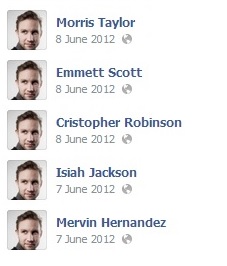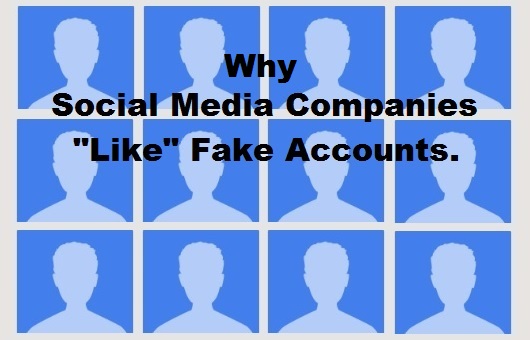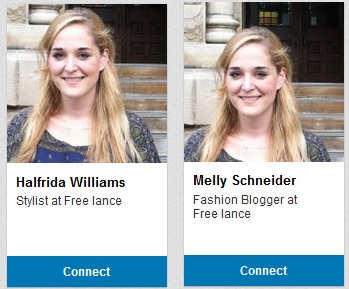Social media companies “like” fake accounts. But why? I suppose this is just my opinion but I believe it is because they can boast about their number of users. Supposedly, these users have some sort of value. For some companies, the number of (real) accounts influences company valuation.
In the beginning, there were fake accounts
Before graphical Internet browsers existed, people had 2400 baud modems and dialed into BBSs. Sometimes to artificially inflate the number of users, BBS owners (aka SysOps) would create 20 accounts here and there to make their board appear more popular than it really was. It was a crazy day in age; people wrote on walls, picked on each other and played time consuming games (oh, wait). When people finally crawled onto the Internet using a 33.6K modem and Netscape or Internet Explorer, people used hit counters– an awful looking, easily manipulated counter of visits to a website. Thankfully, these went the way of the Dodo Bird about the same time GeoCities died.
Fake it til you make it
If you have never seen how Reddit was grown, I’d encourage you to read about it. I watched Reddit co-founder Alexis Ohanian explain this at UNC in 2013. It was entirely done via fake accounts. According to Alexa, Reddit is now the 9th most popular website in the United States. If you have 4 minutes, watch this quick Udacity YouTube video which briefly explains how it started.
Fake Accounts in 2015
In mid 2012, after seeing a client’s money completely wasted on a paid ad campaign, I became carried away researching some of these fake accounts. Thankfully I abandoned my research after just a few days. Most of the time, on Facebook at least, fake accounts are used to manipulate the number of likes a page has. People wanting more likes can purchase fans via a site like Fiverr. This is a terrible idea for a plethora of reasons but that is another article for another day. Small biz owners buy them, movie stars buy them, optometrists get them from their marketing companies without ever knowing it, the list goes on. I am shocked that in 2015 social media companies are still allowing this to happen.
Social Media companies could stop fake accounts
I was writing code in BASIC before I was 10 and have worked in IT my entire life. I am not a genius but I have worked with securing networks, honeypots, pen testing, and configuring things to catch attackers in the act many times. ALL fake accounts have something glaringly obvious in common. On one network, there will be maybe 5,000 accounts that are inactive for 2 weeks, then, they will suddenly all post an update or like a specific page all at the same time. On other networks, they will all comment on public accounts with weird comments such as “hi” or “9837483743”. On other networks that provide DoFollow backlinks, they will log on and all drop a link to a dentist at the same time. From a technical point of view, these accounts would be extremely easy to catch. Yes, it is a game of cat and mouse, but I have personally watched this go on for nearly half of a decade now on some networks.
Fake and Spam Account Examples
Facebook: These examples are 2.5yrs old and the fake accounts have been removed but the problem persists today (Facebook also admits there are millions of fake accounts). I have an amazing example of a paid ad campaign gone horribly wrong due to fake accounts clicking on it. Some people think this is intentional fraud, and here is a story on that. I have a client with a tremendously engaged organic Facebook following but otherwise I use it personally very rarely. Anyways, below are what fake accounts on Facebook look like. Oh, yeah, I somehow tracked down the owner of the profile photo to this guy who does portrait photography in Örnsköldsvik, Västernorrland (don’t ask).
 LinkedIn: Most recently I have seen a surge in fake accounts on LinkedIn. These accounts on LinkedIn are actively connecting to as many people as they can. They send connection requests to real people, probably in an attempt to beat any protection LinkedIn has in place or to make their accounts look more legitimate. On Fiverr, you can buy thousands of LinkedIn connections for $5. I happen to have noticed this “person” in my stream a few times now, so I took a couple of screenshots of her. Here are two of her accounts.
LinkedIn: Most recently I have seen a surge in fake accounts on LinkedIn. These accounts on LinkedIn are actively connecting to as many people as they can. They send connection requests to real people, probably in an attempt to beat any protection LinkedIn has in place or to make their accounts look more legitimate. On Fiverr, you can buy thousands of LinkedIn connections for $5. I happen to have noticed this “person” in my stream a few times now, so I took a couple of screenshots of her. Here are two of her accounts.
Google+: I work with business owners from local siding companies to major law firms, and on Google Plus they all have the same thing in common, an unusual amount of followers that are inactive or fake accounts. Sometimes people join this network, like some pages, and don’t come back. More often though, there are these strange accounts that circle business pages. These business pages were never included in a “shared circle” or involved in any questionable tactics; they just get followed, all the time- any account with a little popularity on the network gets circled often. Someone recently asked me “how many of my followers are fake accounts, 98% or 99%?” Spam accounts on G+ are notorious for leaving strange comments on public profiles and dropping links into communities.
 Twitter: Twitter is … I don’t even know. There are accounts that exist just to blast links on Twitter. There is no real SEO value to this. Other accounts are simply bots that exist to increase follower account. 2,000 followers can be bought for 5 bucks. You get the idea.
Twitter: Twitter is … I don’t even know. There are accounts that exist just to blast links on Twitter. There is no real SEO value to this. Other accounts are simply bots that exist to increase follower account. 2,000 followers can be bought for 5 bucks. You get the idea.
Pinterest: This place is loaded with fake accounts. People pin to get DoFollow links to their site. They blast their spam all over the place. Fake accounts are even used to post images of teddy bears which take people to a site that will exploit outdated java installations and infect PCs.
Other: There are many more social networks not included on this list. This is really just the tip of the iceberg.
Conclusion
As a person of logic I am forced to conclude that social media companies like fake accounts, just as they have for 20+ years now.
Sure, they are attempting to get rid of them, but it is definitely not their top priority.
- Google “Pure Spam” Penalty Deindexes Sites March 6 2024 - March 12, 2024
- What Happened to ChicagoNow.com? - August 30, 2022
- The December 2021 Google Local Pack Algorithm Update - December 17, 2021





Leave a Reply